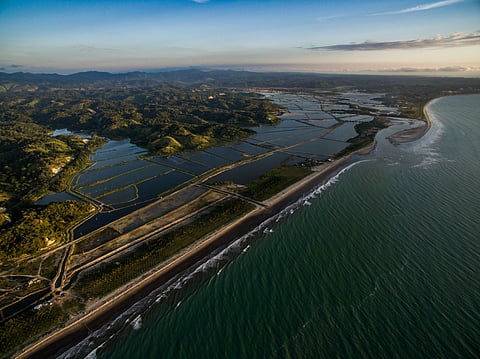

Ecuador's National Chamber of Aquaculture (CNA) estimates that around 110,000 hectares are at imminent risk due to the arrival of El Niño this week. According to official information from the Regional Study of the El Niño Phenomenon in the Southeast Pacific (ERFEN), it will reach the South American country on November 15. The areas at high risk of impact are located in flood zones in the provinces of Guayas, Santa Elena, Manabí, El Oro, and Esmeraldas.
Given the needs of their activity, where water resources are fundamental, all Ecuadorian shrimp farms are located very close to different bodies of water, so the entire shrimp sector of the country is at risk, whether it is high, medium, or low, depending on the intensity and permanence of the El Niño phenomenon. More than 50% of them are located in flood zones and this is where the danger is most imminent.
The high-impact risk areas are San Lorenzo Atacames and Muisne in the province of Esmeraldas; Pedernales, San Vicente and Bahía in the province of Manabí; Atahualpa, Chanduy and San José de Antón in Santa Elena; Playas, Guayaquil, Samborondón, Yaguachi, Naranjal and Balao in Guayas; and El Guabo, Machala, Santa Rosa, Arenillas and Huaquillas in El Oro.
According to official information provided by the National Chamber of Aquaculture, ERFEN technicians announced that the phenomenon is likely to reach the country as of November 15. The agency in charge of studying the El Niño in Ecuador bases its estimates on its data collection in 57 stations from the mainland to the Galapagos Islands, as well as information from the U.S. National Oceanic and Atmospheric Administration (NOAA), which indicates a 75%-85% probability of strong intensity.
The CNA has asked shrimp producers in Ecuador to mitigate the impact of this anomalous climatic event and, according to the particularities of each shrimp farm, laboratory, processing plant, or feed mill, to try to adopt the necessary measures. These include the construction of retaining walls or checking of the condition of existing ones; verification of the correct storage of materials, both to avoid contact of inputs with the soil and to avoid spills of waste or hazardous materials; checking of pest control measures; or review of electrical installations, among others.
Moreover, the National Aquaculture Chamber has also reminded the need to keep the personnel informed regarding the measures to take in case of cloudy or silted water, red tide detection, and first aid. "These measures are fundamental to protect both facilities and workers, thus ensuring the shrimp sector's preparation for this anomalous climatic event," said the CNA, which had already disseminated these recommendations to its affiliates during the months of May and July.
In addition, the CNA is also coordinating with the competent authorities, Prefectures and Mayors' Offices, to carry out emergency works to mitigate risks. The impact of El Niño on the economy and employment in Ecuador could be very serious, since the shrimp aquaculture industry is the country's main economic activity.
